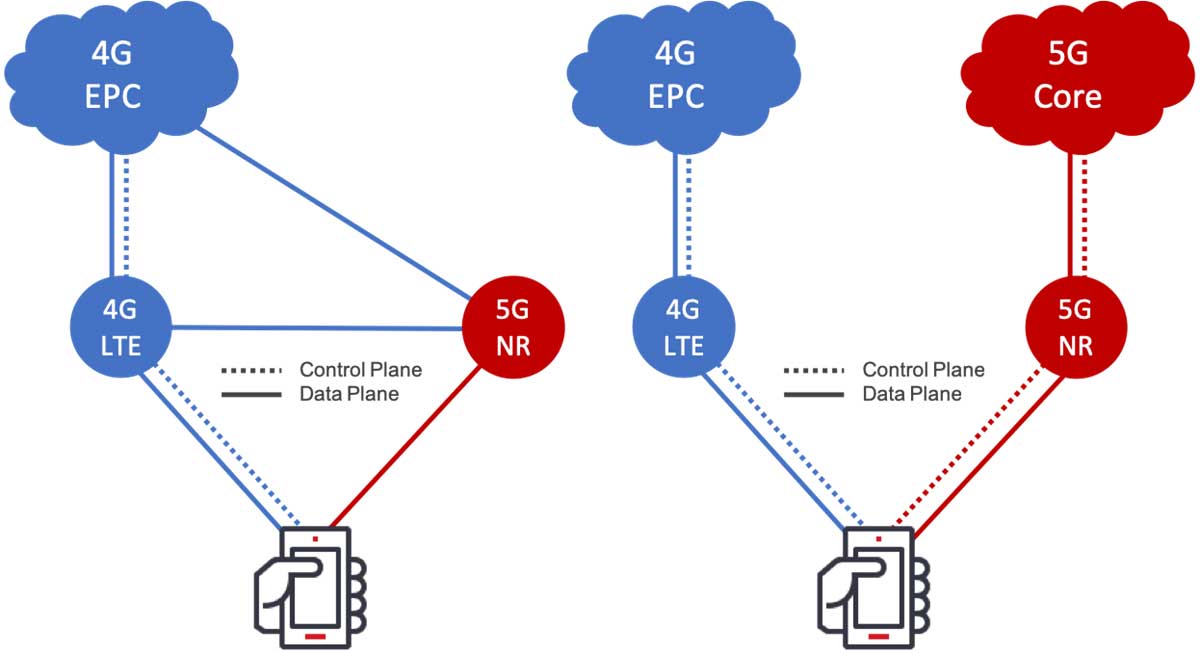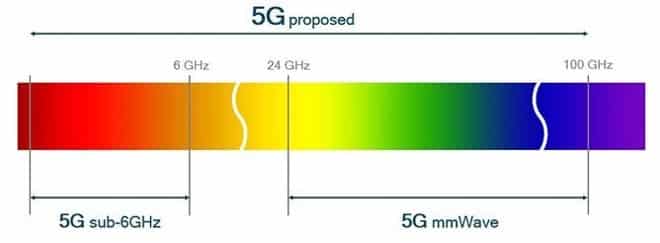What is 5G?
Ah, I’m sure you know what 5G is – you’ve heard about it for years. And 5G has been live in Australia for over a year now, so there’s a good chance you’ve actually used a 5G home wireless plan.
But for the the sake of formality, let’s give a brief definition of what it is. 5G is the fifth generation of mobile network technology. Previous generations included 4G, which most people currently use, along with 3G, 2G, and 1G.
But even though we’re willing to bet you already knew what 5G was before reading the brief definition above, we’re not willing to bet that you know everything about 5G and how it works.
In this post, we discuss the different components and types of 5G, what the technology offers, and dispel a ridiculous myth about its potential dangers.
NSA vs. SA, Low, mid, high: Different types of 5G
All 5G networks are not the same. There are actually two types of 5G networks – Non-standalone (NSA) 5G and Standalone (SA) 5G. Here’s a brief look at the difference between them:
- NSA 5G actually uses a 4G LTE-core to launch its network. Australian telcos use this method, but Telstra recently announced that it is now SA 5G-ready. The whole idea behind using NSA is to launch 5G networks faster and save costs. But there are trade-offs – although it performs better than 4G, it’s not the 5G network you’ve been hearing about because it doesn’t give you the lowest latency possible.
- SA 5G, on the other hand, uses a 5G-core, not 4G. You also need a compatible device to use such a network, and none are currently available in Australia. SA 5G has a better chance of meeting the high expectations of 5G that were advertised for years and years. It has greater capacity, and provides the much-anticipated ultra low latency. What this does is create a range of possibilities and new 5G use cases, especially those that are industrial in nature.
NSA 5G vs. SA 5G. src
Eventually, all of Australia’s telcos will go the SA 5G route. Current 5G networks are launched on 4G cores just to enter the market quicker – no telco wants to be left behind. But while the differences aren’t such a big deal for consumers, enterprises will see great benefit in what a SA 5G network has to offer.
But the different 5G components doesn’t end there. 5G also comes in different bands in airwaves – low, middle, and high – and their performances are entirely different. Here’s a brief explanation:
- Low band refers to frequencies under 2GHz. They are ancient, used for television and older cellular frequencies. A low band 5G network is slow – well, depending on your definition of slow because it will perform in a manner similar to basic 4G.
- Medium band refers to frequencies between 2GHz and 10GHz (or slightly more). A lot of that 4G core that houses NSA 5G lives in this spectrum, along with other current mobile and WiFi networks. You’ll get some pretty good performance on this band, but it’s still not 5G as advertised. Current Australia networks use mid band frequencies, specifically around the 3.6GHz range.
- High band refers to frequencies between 20GHz and 100GHz (perhaps more, one day). This is where the real 5G lives, and where telcos are itching to get. Bands in these airwaves haven’t been used – it’s free up there, giving 5G the opportunity to roam. The ACMA will allocate bands in this spectrum – 26GHz – to the major telcos next year. 5G in this range is commonly referred to as mmWave 5G, and it is where the shorter waves lie – ergo those stories about small 5G antennas scattered all over the place, even in front of residential properties. Both Telstra and Optus plan on trialling mmWave 5G this year. Telstra, though, has made more concrete moves, releasing Australia’s first and only mmWave-compatible device a couple of weeks ago – the Telstra 5G WiFi Pro.
Different 5G spectrum bands. src
Faster speeds
We haven’t even covered everything yet – doing so would result in an extremely lengthy post. But the different component described above deal with the core of the different types of 5G out there, and what’s to come. The whole point is that we haven’t even scratched the surface.
What consumers hear most about 5G is how fast it is. Initial reports boasted of speeds up to 100 times faster than current 4G networks – wow! But what we have in Australia right now are NSA 5G networks in mid-range bands, and they aren’t really that impressive compared to what we’d been led to expect.
Look at Optus, for example. Last year, the telco announced average 5G speeds of 100Mbps, and max speeds of 295Mbps. That’s actually fast, but it isn’t a big deal – certainly not 100 times faster than 4G, as some 4G networks can actually get those speeds or more.
Telstra hasn’t faired much better – a recent Ookla speed test clocked their 5G speed at 430Mbps using their newly launched 5G Wi-Fi Pro. Pretty fast, but still not the “10 times 4G”, 100GBps we were initially sold.
But all this can be explained by the different versions of 5G out there. In other words, we haven’t gotten to the real deal 5G network, but we’ll begin the journey there with next year’s mmWave allocations, and a decade worth of future improvements and new applications.
Bandwidth and latency: It isn’t all about speed
Newsflash – 5G is also about increased bandwidth and low latency, not just fast speeds.
- 5G’s higher bandwidth means you’ll have a ton of space to connect a lot of different devices. This means no hiccups when other heavy users log on to your network connection.
- 5G’s ultra low latency refers to response time. Applications on an ideal 5G network – perhaps SA 5G on mmWave – will be extremely responsive. As soon as a command is given, it reports to the clouds and responds with no delay. This means everything for the future of a lot of other technologies like artificial intelligence, machine learning, the Internet of Things, and so on. Low latency – immediate response – is extremely important for such smart applications that might, for instance, put driverless cars on the road or allow a robot perform surgery.
COVID-19: The latest, stupidly dangerous 5G myth
While the future of 5G holds the real 5G, some are trying to kill the technology long before that happens. From the onset, there have been ominous questions about health risks associated with 5G, mostly dealing with fears of cancerous growth from radiation, considering the technology will eventually move to short wave bands that might require antennas to be very many and very close to residential properties. These concerns have since been dispelled by study after study.
But even though those fears are no longer valid, we could understand the reasoning behind them at the time – before studies proved them wrong. What’s more concerning, though, is a more recent, irrational myth: That 5G causes the coronavirus that leads to COVID-19.
This latest conspiracy theory is absurd, simply put. But the absurdity has been swallowed up by many, who actually believe that a mobile technology can somehow create a biological virus. So much so that their belief drove them to burn down 5G towers here in Australia and abroad.
But the stupidity behind the conspiracy theory is what’s more baffling. Yet, 12 percent of Australians believe it.
If you ever get tempted to carry on the myth, just remember that the coronavirus has pretty much disappeared from Australia, even while 5G continued to grow throughout the country. Think about that.
Final words
5G is not just what you think it is – there’s a whole lot more. We’ve tried to cover the important parts of the mobile technology to give you an idea of how it actually works. But in reality, a consumer’s main goal is to consume – in this case, use – the technology to enhance their internet experience. So test out current 5G broadband plans and look forward to the future of the real 5G – with the promised speeds, higher bandwidth, and low-to-zero latency that was initially advertised.

